When you think of a chicken, you probably envision a lovely rooster with a large single comb atop his head, and you hear the faint familiar crow that most people believe only happens in the morning—sorry to burst your bubble folks but rooster will crow all day long.

With that being said, the image you pictured is the iconic chicken that comes to mind for most people. However, there are actually over at least 130 different breeds of chicken on record. Now, that’s a lot of chicken wings to choose from. So how do you know what is what, and who does what in the world of poultry?
If you are just getting started with chickens, here’s a few tidbits of info to get your feet wet before diving into the animal considered to be the gateway animal to farming.
Meat Chickens
If you have been to the grocery store lately and purchased some chicken from the meat department, chances are you have just purchased a Cornish Cross chicken.
While any chicken can be eaten, there are a few breeds that are raised specifically for meat. These birds typically reach maturity quickly, carry a lot of muscle, and must be butchered before they become too heavy to thrive. Here are two different breeds to consider when selecting a meat chicken:
Cornish Cross
The Cornish Cross is a hybrid (a cross) between the Cornish and the White Plymouth Rock chickens. They were bred to grow fast to keep up with demand in the commercial poultry industry, to yield a large amount of meat, and to look appealing to the consumer once it has been processed.

The Ranger
The Ranger chicken is another meat chicken that grows quickly but has not been modified as much as the Cornish Cross. This chicken can forage well, unlike the Cornish Cross, and has a slower growth rate. Their skin tends to be either yellow or dark, depending on the color of Ranger you purchase.
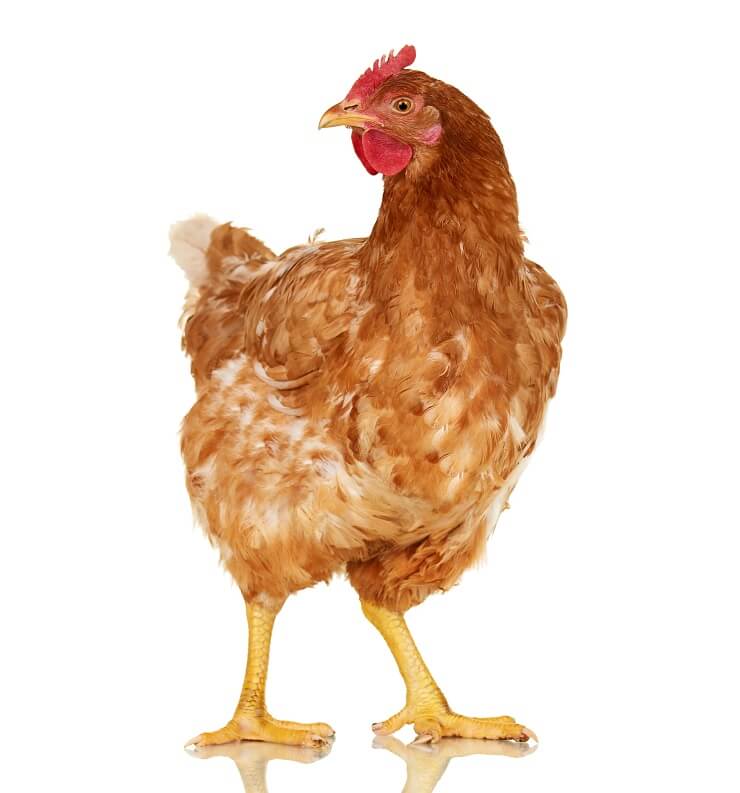
Layers
When you hear the term “layer” it is usually in reference to all the chicken breeds that have been bred to primarily produce eggs. Some chickens were bred, and nurtured over time, to become quite the productive bird. If you purchase eggs in the grocery store, and they are the classic white egg, they are most likely produced from a Leghorn.
Most chickens do lay eggs, it’s just nature, but some lay more than others, and are kept for that reason. Others may lay fewer eggs, but their owners enjoy them due to either the color of their eggs, their temperament, or their appearance.
Let’s take a look at three of the popular layer breeds:
Leghorn
If you want a production layer, the snow-white Leghorn is your hen! This chicken can lay 300 white eggs a year, so it’s no wonder the commercial egg operations opt to raise this breed of chicken. While you may find a ton of this breed at the commercial farms, they are also good foragers and enjoy free-ranging.
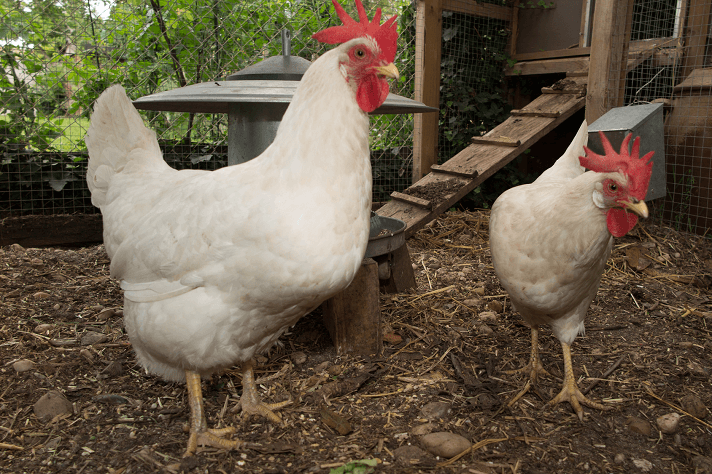
Orpington
This big broody chicken may not be able to keep up with the Leghorn production-wise, but she is still considered to be a prolific layer of brown eggs throughout the entire year. Many people keep this chicken because of her docile nature, and fluffy appearance! Orpington hens tend to be broody, which means they love to raise their own chicks if they are allowed to.
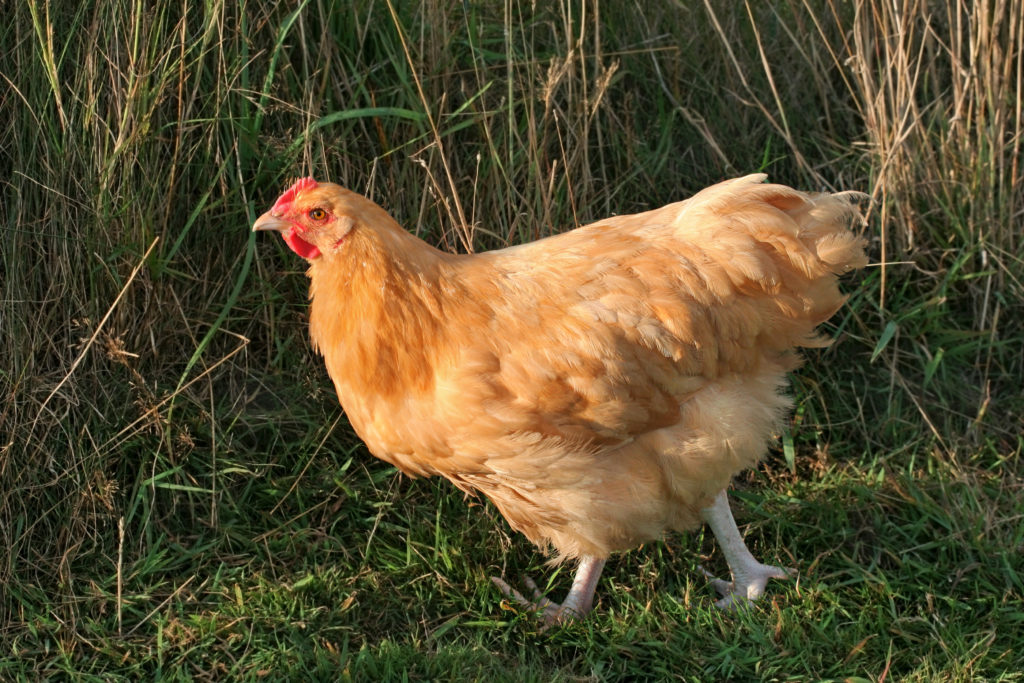
Young Buff Orpington
Easter Egger
The Easter Egger is actually a hybrid and not a recognized breed. This chicken is usually a descendant of the Araucana, crossed with another breed of chicken. This chicken usually sports muffs and a beard, but what’s really interesting about this hybrid is that it produces blue eggs!
The Easter Egger has become one of the most popular chickens due to their lovely blue eggs, but you can also find layers that lay greenish eggs, like the Olive Egger. Keep in mind that these are not typically recognized breeds unlike the Araucana, who does actually lay bright blue eggs but can be more difficult to find.
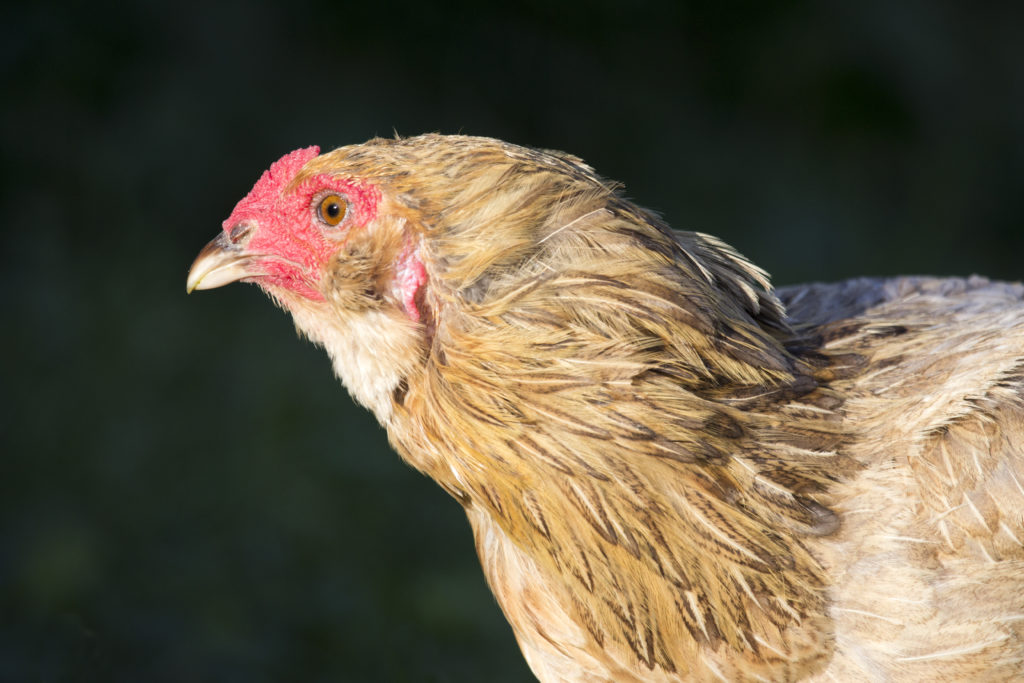
Portrait of an Easter Egger Hen. Photographed in Maryland in the summer time.
Ornamental Chickens
Some people love chickens so much that they just want something pretty to look at, and often those chickens come in the form of rare-breed chickens, or ornamental bantams.
Bantams
Bantams are the mini-me versions of the standard-sized breeds of chickens, and some are a breed of their own. Even though many people consider the bantam a novelty variety of chicken, they also lay pee-wee sized eggs that taste just as good as a standard-sized chicken’s eggs.
Bantams that look the larger version of the breed, usually carry on the temperaments, and production qualities of their larger counter-parts…just on a smaller scale with much smaller eggs. You can’t find bantams in every breed of chicken, but some of the more popular bantams available are the Orpington, Brahma, Easter Egger, and Welsummers.
Other bantams, that are standalone breeds, are still on the smaller size, but that doesn’t affect their ability to show off their big personalities. The Silkie, for example, is fluffy little chicken that is considered to be a bantam due to its small stature. Another popular bantam breed is the Mille Fleur D’uccle, but the list goes on and on, and every year more chickens are recognized by organizations around the world.
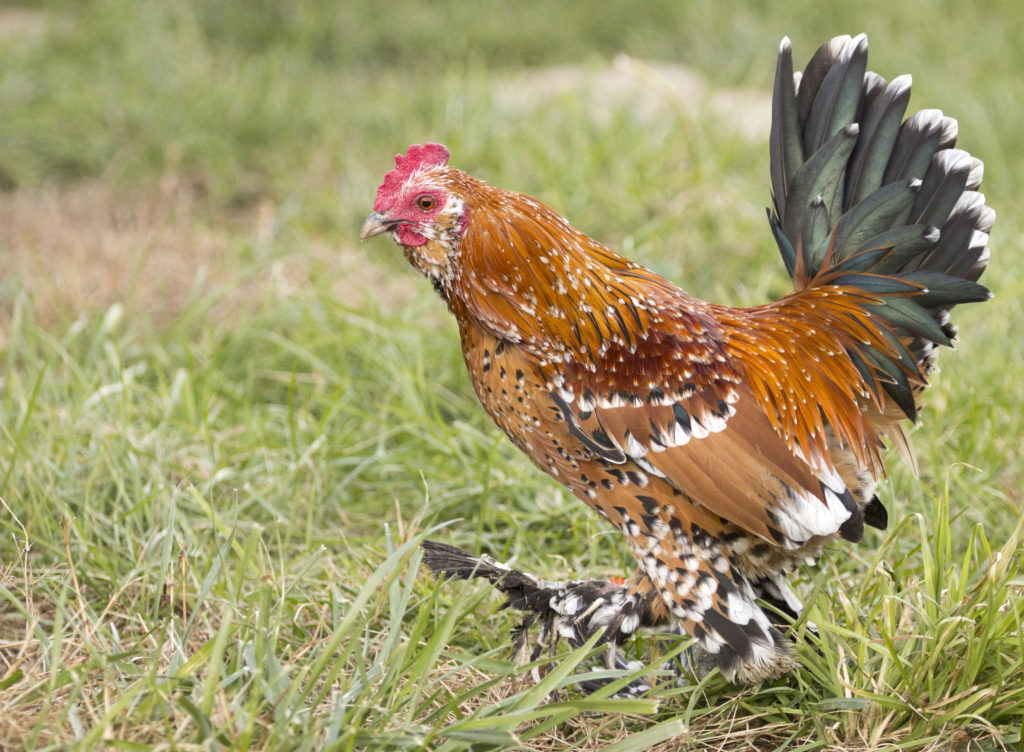
There are many chicken breeds to browse, and more are being developed by devoted fanciers every day. Whether you are looking for a meat bird, layers, or ornamental bantams, there is usually a little something for everyone.
Claire Woods is the editor at The Happy Chicken Coop and is a fourth-generation chicken keeper. Her love for chickens has helped educate millions in the proper care and upbringing of all the countless types of chickens. She has also authored the book “Backyard Chickens: A Practical Handbook to Raising Chickens” and looks forward to contributing more in helping everyone in this great adventure of raising chickens.













2 Comments
I was wondering what you thought of the American Bresse Chickens ? Are you familiar, would they make good family birds- if not, what would you compare them to and recommend over them? Thanks for all you do!! Soooo helpful! Rich
Who are the very fluffy show chickens? They’re like hundreds of dollars but they are so cute and fluffy. The fluff is on top of their heads, ok their necks, and legs.